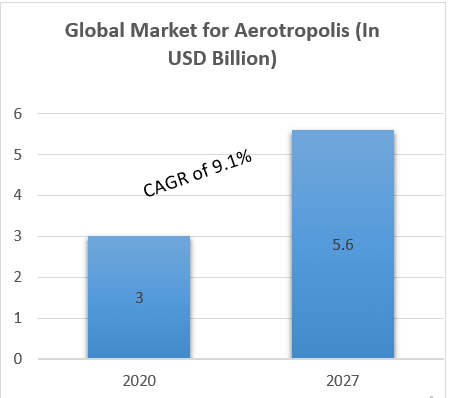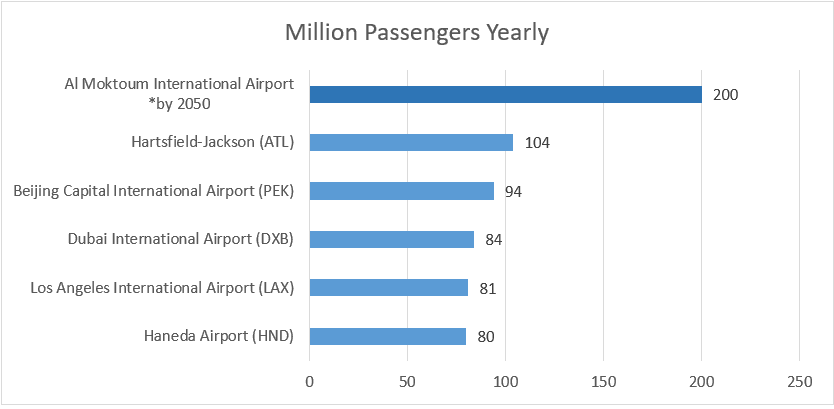Aerotrópolis: Una Revolución Urbana Futurista Que Alza el Vuelo en el Futuro
En un panorama de ritmo acelerado, los aeropuertos no son estáticos, y están en constante evolución en forma y función. Tradicionalmente, los aeropuertos se han entendido como lugares donde operan los aviones, incluyendo pistas de aterrizaje, torres de control, hangares, terminales y otras instalaciones que sirven a pasajeros, carga y aeronaves. Sin embargo, está surgiendo un concepto nuevo y mucho más amplio conocido como la 'Ciudad Aeroportuaria', que se ha convertido en el camino a seguir para muchos aeropuertos
Aerotrópolises un área metropolitana desarrollada cerca del aeropuerto como su centro. Implica el desarrollo de una ciudad basada en el aeropuerto, con el transporte aéreo como su núcleo, rodeada de centros comerciales, de hostelería, de entretenimiento, educativos y de atención médica. Aerotrópolis es la fusión de las palabras aviación y metrópolis. Su sección comercial incluye grupos de empresas orientadas a la aviación, que esencialmente coinciden con empresas de mensajería y transporte como FedEx. Se ha relacionado con el aumento de la globalización y el comercio internacional. Frederick W. Smith, CEO de la corporación FedEx, dijo: "La mayor economía hoy en día es la economía del comercio internacional"
· El modelo de ciudad aeroportuaria ha desarrollado instalaciones no aeronáuticas que proporcionan múltiples fuentes de ingresos
· Se han convertido en nodos clave de los sistemas de producción global, ofreciendo velocidad, agilidad y conectividad
· Los almacenes, la distribución y las empresas de logística están ubicados más cerca de los aeropuertos para reducir la distancia entre el lugar de fabricación y la ubicación del transporte
· Las empresas vinculadas a la aviación incluyen instalaciones de fabricación y distribución sensibles al tiempo, el comercio minorista y la industria del turismo ecológico

·Ventajas de la Aerotrópolis
Crecimiento de las empresas– Aerotrópolis actúa como un punto de conectividad para proveedores, socios comerciales y clientes. El desarrollo de espacios de oficinas comerciales en la aerotrópolis asegura transacciones más rápidas y eficientes y reduciría los costes significativos de logística para las empresas. Las empresas también podrían aprovechar los beneficios de las economías de escala proporcionadas por las instalaciones de almacenamiento y los centros de carga
Desarrollo del turismo– Centros recreativos como centros comerciales, centros culturales como museos, hoteles, spas y centros de entretenimiento. La atractiva infraestructura de la aerotrópolis atrae a turistas tanto del país como del extranjero
Generación de empleo– El desarrollo de una compleja ciudad metropolitana basada en el aeropuerto abre varias vías comerciales y de hostelería, animando a muchas empresas a invertir en esta elaborada plataforma, abriendo muchos puestos de trabajo en los sectores de ventas comerciales, hostelería, gestión, logística y entretenimiento
Desarrollo de infraestructura de última generación– Aerotrópolis promueve el crecimiento de la tecnología del arte. Estos espacios bien desarrollados y futuristas atraen a muchas empresas e inversores que buscan beneficiarse de la empresa
Construcción del aeropuerto más grande del mundo
Dubai no sólo está construyendo el aeropuerto más grande del mundo, sino una ciudad alrededor del aeropuerto. Cuando se complete, Dubai South albergará a 900.000 habitantes. Cuando se complete, tendrá una capacidad de manejo de 200 millones de pasajeros anuales. Los aeropuertos serán accesibles en un plazo de 8 horas de vuelo para dos tercios de la población mundial, con el objetivo de fortalecer su posición como centro de comercio y logística

Conclusión
La globalización está empujando a los países hacia la adopción del modelo de Aerotrópolis, siendo el vínculo para conectarse al mercado global con velocidad y eficiencia. Ha permitido a las empresas comerciales optimizar sus gastos reduciendo sus costes de transporte y beneficiándose de las economías de escala.
Los críticos del concepto señalan si el petróleo seguirá siendo relativamente barato y ampliamente disponible en el futuro o si una recesión en la producción mundial de petróleo afectará negativamente a la aviación y, por lo tanto, a la aerotrópolis. Otros han criticado la exageración de la dependencia del transporte aéreo, afirmando que, aunque los aparatos electrónicos de alto valor se envían por vía aérea, los artículos más voluminosos no se envían por transporte aéreo.
Sin embargo, el desarrollo de este modelo creará infraestructura de última generación, empleo y una conectividad más rápida con el mundo y creará oportunidades de negocio comercial para competir en suelo extranjero.
